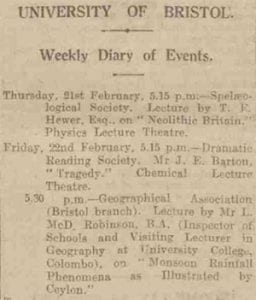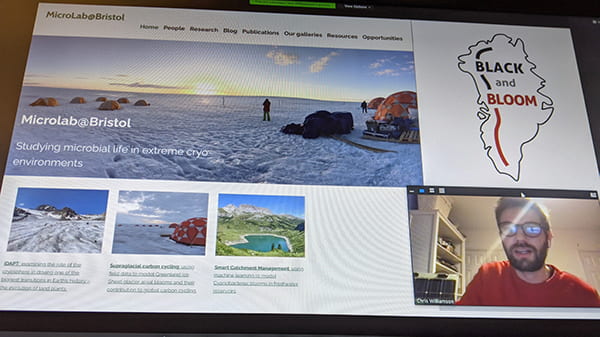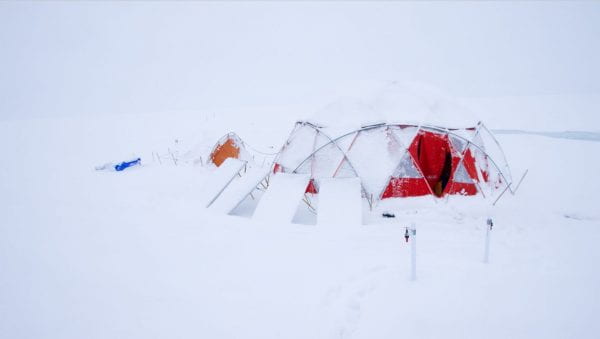GA lecture: Bloomin’ algae and ice sheets
GA lecture: Bloomin’ algae and ice sheets: 7pm March 2nd, 2021
It was a pleasure to host Dr. Chris Williamson from the School of Geographical Sciences, University of Bristol at the first of two online lectures in 20-21; a talk on microbes, albedo and the surface of Greenland, covering a wide range of spatial scales.


Embracing new modes of delivery, Chris zoomed in (pun intended) on microbial life on the surface of the Greenland ice sheet to illustrate their impact on energy balance, sea level rise and more. He presented the cutting edge science, and also the logistical challenges associated with conducting such field science in extreme environments.

The science presented was part of the Black and Bloom project, which involved many scientists from Bristol and also researchers from Svalbard, Potsdam, Sheffield, Leeds and Aberystwyth. Whilst we cannot undertake fieldwork, or even travel, at the moment, it was great to get a feel for fieldwork in such a different landscape, where sampling snow, filtering water, and filling test tubes presents a challenge.

Chris covered the science of albedo, photosynthesis, pigmentation and photophysiology at a level that could be adsorbed (another pun) by all in the audience, which included students from Bradley Stoke, Clifton College, St. Mary Redcliffe, Redmaids High, King Edwards Bath, Badminton and North Bristol Post-16 Centre.
There were plenty of questions at the end via the chat function. It was pleasing to see such an engaged audience, which actually grew during the course of the event because of late arrivals and no departures before the end; A testament to the quality of the lecture.
For further information/links see Resources.
